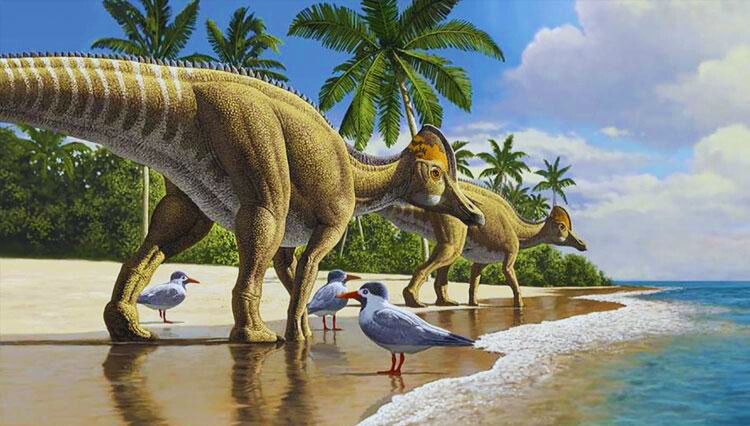Introduction
Dinosaurs, the majestic giants that once roamed the Earth, have always captured our imagination. One intriguing question that echoes through time is, “why were dinosaurs so big?” In this article, we embark on a journey to unravel the secrets behind the colossal size of these prehistoric creatures. From scientific explanations to unique perspectives, get ready to delve into the world of giants.
The Era of Titans
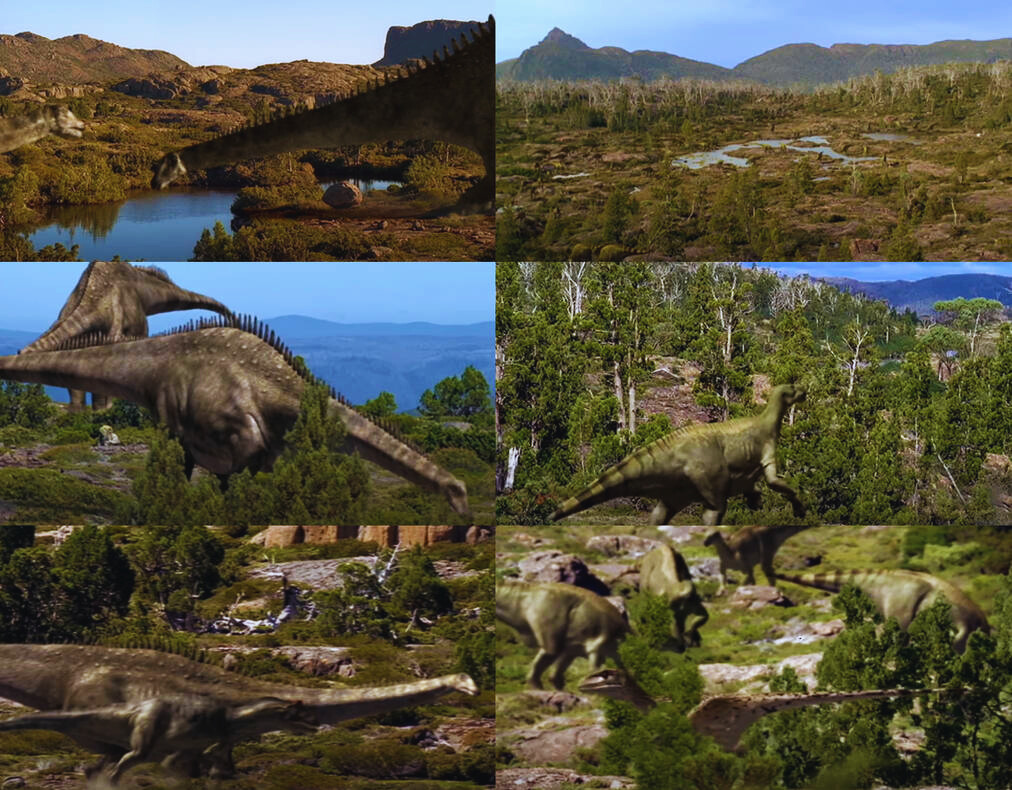
Unveiling the Giants of the Mesozoic Era
Welcome to the Mesozoic Era, a time when Earth played host to colossal beings known as dinosaurs. This epoch, spanning millions of years, witnessed the rise and reign of these majestic creatures. The era of titans unfolded across three periods: the Triassic, Jurassic, and Cretaceous.
Triassic Triumphs
During the Triassic period, the first dinosaurs emerged, relatively small in size compared to their later counterparts. However, this marked the beginning of a transformation that would lead to the development of massive species.
Jurassic Giants
The Jurassic period saw the ascendancy of iconic giants like the long-necked Brachiosaurus and the fearsome Tyrannosaurus rex. The landscape teemed with diverse, gigantic life forms, each adapted to its unique environment.
Cretaceous Crescendo
As we move into the Cretaceous period, the size of dinosaurs reached unparalleled heights. Sauropods like Argentinosaurus, among the largest land animals ever, roamed the Earth. The era of Titans was at its zenith.
Impact on Earth’s Ecosystem
The dominance of these colossal beings had a profound impact on the ecosystems of the time. Their sheer size influenced plant life, shaped landscapes, and established a dynamic balance in the intricate web of life.
In exploring the era of Titans, we gain insight into the forces that shaped the colossal nature of dinosaurs. From humble beginnings in the Triassic to the towering giants of the Cretaceous, these creatures left an indelible mark on Earth’s history.
Adaptations for Dominance
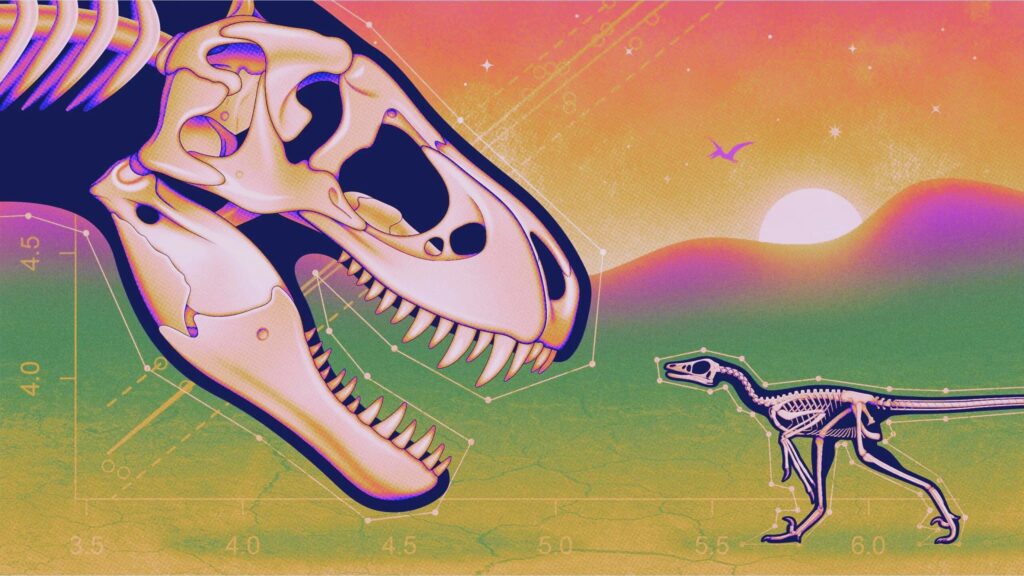
Evolutionary Strategies of Prehistoric Giants
In the relentless struggle for survival, dinosaurs developed a myriad of adaptations that propelled them to dominance in their ecosystems. From formidable physical features to specialized behaviors, these evolutionary strategies were essential for their reign as Earth’s rulers.
1. Long Necks and Tail Weapons
Some dinosaurs, particularly the sauropods and theropods, evolved with remarkably long necks and tails. The long necks allowed herbivorous dinosaurs to reach high vegetation, while the tails of theropods became lethal weapons, aiding in both defense and hunting.
2. Powerful Limbs and Claws
The development of powerful limbs and claws was a common adaptation among dinosaurs. These features were crucial for both herbivores and carnivores. Herbivores used them for defense against predators, while carnivores employed their claws for capturing and subduing prey.
3. Armor and Protective Coverings
Several dinosaur species developed natural armor or protective coverings. Ankylosaurs, for instance, had thick, bony plates embedded in their skin, providing a robust defense against predators. This adaptation allowed them to thrive in diverse environments.
4. Specialized Teeth and Jaws
Dinosaurs exhibited a wide array of teeth and jaw structures tailored to their diets. Carnivores had sharp, serrated teeth for tearing flesh, while herbivores had specialized teeth for grinding plant material. These adaptations optimized their ability to extract nutrients from their chosen food sources.
5. Efficient Respiratory Systems
The colossal size of some dinosaurs necessitated efficient respiratory systems. Air sacs connected to hollow bones facilitated a constant flow of air, enhancing oxygen exchange. This adaptation supported the high energy demands of large bodies.
6. Social Structures and Cooperation
In certain dinosaur species, the development of social structures and cooperation proved advantageous. Pack hunting among some theropods and communal living in herbivorous dinosaurs offered protection, efficient hunting, and shared responsibilities, contributing to their dominance.
7. Enhanced Senses
Dinosaurs honed their senses to navigate and survive in their environments. Keen eyesight, acute hearing, and a heightened sense of smell were crucial adaptations. These sensory enhancements aided in detecting predators, locating prey, and navigating their surroundings.
Understanding these adaptations provides a glimpse into the evolutionary arms race that defined the dominance of dinosaurs. Each feature, whether defensive or offensive, played a role in shaping the intricate balance of power in prehistoric ecosystems.
Environmental Influences
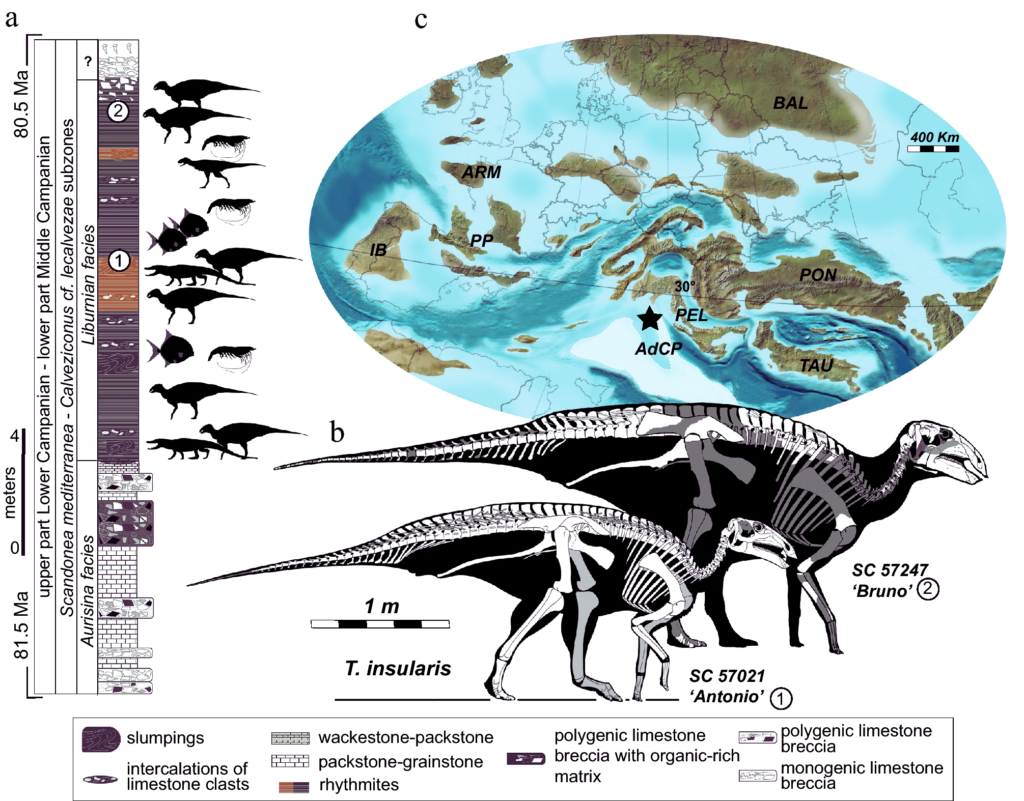
Shaping Dinosaur Sizes Through Earth’s Dynamic Changes
The colossal size of dinosaurs wasn’t merely a product of their biology; it was intricately tied to the ever-changing environmental landscapes they inhabited. Let’s delve into the environmental influences that played a pivotal role in determining the sizes of these prehistoric giants.
1. Climate Variability
Dinosaurs, like all living beings, were greatly influenced by climate fluctuations. The Mesozoic Era, the age of dinosaurs, witnessed diverse climatic conditions, from tropical warmth to polar cold. These variations directly impacted resource availability, influencing dinosaurs’ evolution to adapt to their specific climates.
2. Abundance of Vegetation
The abundance and distribution of vegetation were key factors in the size evolution of herbivorous dinosaurs. Regions rich in plant life supported the existence of large herbivores, providing the necessary sustenance to fuel their massive bodies. Conversely, in areas with sparse vegetation, smaller herbivores were more prevalent.
3. Geological Features
Dinosaurs were not confined to uniform landscapes. The varied geological features of the Earth, including mountains, plains, and forests, shaped the evolution of different species. Large dinosaurs adapted to open spaces, utilizing their size advantage, while smaller species thrived in more complex terrains.
4. Proximity to Water Sources
The proximity to water sources significantly influenced dinosaur size. Regions with abundant water allowed for the existence of large aquatic and semi-aquatic dinosaurs. Bodies of water not only provided sustenance but also served as habitats for specific dinosaur species.
5. Biotic Interactions
Interactions with other organisms in their ecosystems, both plant and animal, played a role in determining dinosaur sizes. The availability of diverse prey for carnivores and competition for resources among herbivores contributed to the evolution of varying body sizes to optimize survival strategies.
6. Evolutionary Pressures
The dynamic nature of Earth’s ecosystems imposed constant evolutionary pressures on dinosaurs. As environmental conditions changed, dinosaurs had to adapt or face extinction. These pressures influenced the selection of certain traits, including size, that conferred advantages in the struggle for survival.
Understanding the environmental influences on dinosaur size provides a holistic view of the complex interplay between these magnificent creatures and the world they inhabit. From climatic shifts to the availability of resources, each factor contributed to the evolution of diverse sizes among dinosaurs, leaving an indelible mark on Earth’s history.
Unveiling the Science Behind Size
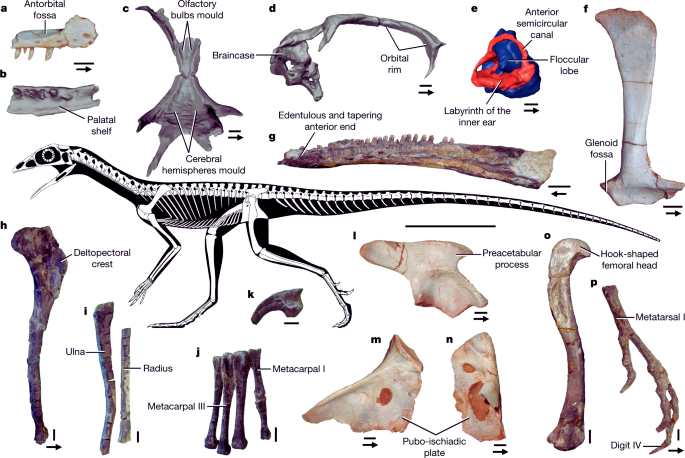
Decoding the Energetic Enigma of Dinosaurs
The colossal size of dinosaurs posed a fascinating metabolic puzzle for scientists. How did these prehistoric giants sustain themselves? Unraveling the metabolic mysteries provides a glimpse into the energy dynamics that fueled the life of these magnificent creatures.
1. Gigantic Energy Demands
The sheer size of dinosaurs meant colossal energy demands. To fuel their massive bodies, dinosaurs required an efficient metabolic system capable of extracting and utilizing nutrients. Understanding how their metabolism coped with such demands is key to comprehending their evolutionary success.
2. Endothermic or Ectothermic?
A longstanding debate in paleontology revolves around whether dinosaurs were endothermic (warm-blooded) or ectothermic (cold-blooded). Recent research suggests a middle ground with some dinosaurs exhibiting a combination of both, allowing for a dynamic and adaptable metabolism.
3. Respiratory Innovations
To support their massive bodies, dinosaurs developed innovative respiratory systems. Air sacs connected to hollow bones facilitated a continuous flow of air, ensuring efficient oxygen exchange. This adaptation enhanced their aerobic capacity, a crucial aspect of sustaining energy-demanding activities.
4. Feeding Strategies and Digestive Efficiency
Dinosaurs showcased diverse feeding strategies, from herbivores grazing on vegetation to carnivores hunting for prey. Their digestive systems evolved to optimize nutrient extraction from varied diets. Understanding these adaptations provides insights into how they meet their nutritional requirements.
5. Fasting and Feasting Cycles
The cyclical nature of resource availability influenced the metabolic strategies of dinosaurs. Periods of abundance led to feasting, allowing for energy storage, while lean times required efficient fasting adaptations. This metabolic flexibility contributed to their ability to thrive in ever-changing environments.
6. Growth Rates and Metabolic Intensity
The rapid growth rates observed in some dinosaurs pose questions about their metabolic intensity. Balancing the energy needed for growth, maintenance, and reproduction provides a window into the intricacies of dinosaur metabolism. This adaptability likely played a role in their long-term survival.
Deciphering the metabolic mysteries of dinosaurs is a journey into the heart of their existence. From efficient respiratory adaptations to strategies for extracting nutrients, these creatures developed a range of metabolic innovations. Unraveling these mysteries not only enhances our understanding of dinosaurs but also sheds light on the broader mechanisms of energy regulation in the animal kingdom.
Gravity’s Role
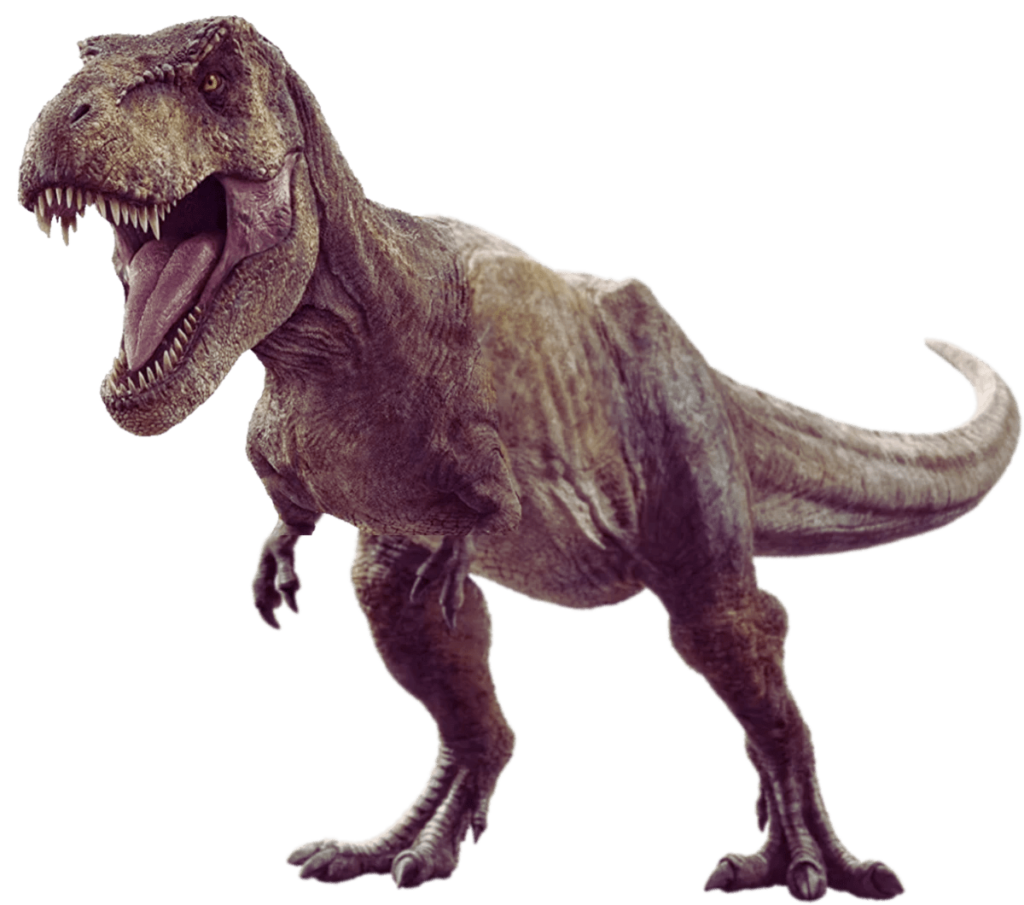
The Weighty Influence on Dinosaur Evolution
Gravity, an omnipresent force on Earth, played a pivotal role in shaping the evolution of dinosaurs. From the size of their limbs to the structure of their bones, the influence of gravity left an indelible mark on these prehistoric giants. Let’s delve into how gravity contributed to the unique characteristics of dinosaurs.
1. Limb Length and Body Mass
The gravitational pull of Earth exerted significant pressure on dinosaurs. To counteract this force, dinosaurs evolved limb lengths that were proportionate to their body masses. This adaptation allowed for efficient movement and stability, crucial for navigating diverse landscapes.
2. Skeletal Strength and Bone Density
Gravity’s constant pull necessitated robust skeletal structures. Dinosaurs developed dense bones to withstand the gravitational stress associated with their massive sizes. The strength of their skeletons was a key factor in supporting their weight and facilitating both movement and posture.
3. Posture and Gait
The influence of gravity shaped the posture and gait of dinosaurs. Some, like the iconic sauropods, developed an upright posture with pillar-like legs, distributing their weight evenly. Others, such as theropods, adopted a more horizontal posture, enhancing their agility and facilitating efficient movement.
4. Respiratory Challenges
Gravity not only affected the musculoskeletal system but also presented respiratory challenges. Larger dinosaurs had to overcome the resistance of moving air through their respiratory systems, leading to the development of specialized adaptations such as efficient air sacs and enhanced lung capacity.
5. Reproductive Challenges
The gravitational challenges extended to the reproductive aspects of dinosaurs. Larger body sizes meant increased demands on reproductive systems. Understanding how gravity influenced reproductive strategies provides insights into the complexities of sustaining life as a colossal species.
6. Evolutionary Trade-Offs
While gravity imposed constraints, it also presented opportunities. The interplay between gravity and evolutionary adaptations led to a delicate balance. Dinosaurs evolved traits that optimized their ability to thrive in gravity’s embrace, showcasing the intricate dance between biological constraints and opportunities.
Gravity’s role in dinosaur evolution goes beyond a simple force—it’s an architect shaping the very essence of these prehistoric beings. By adapting to the gravitational challenges of Earth, dinosaurs not only survived but thrived in a world where size, strength, and adaptability were the currency of existence.
Evolutionary Advantages
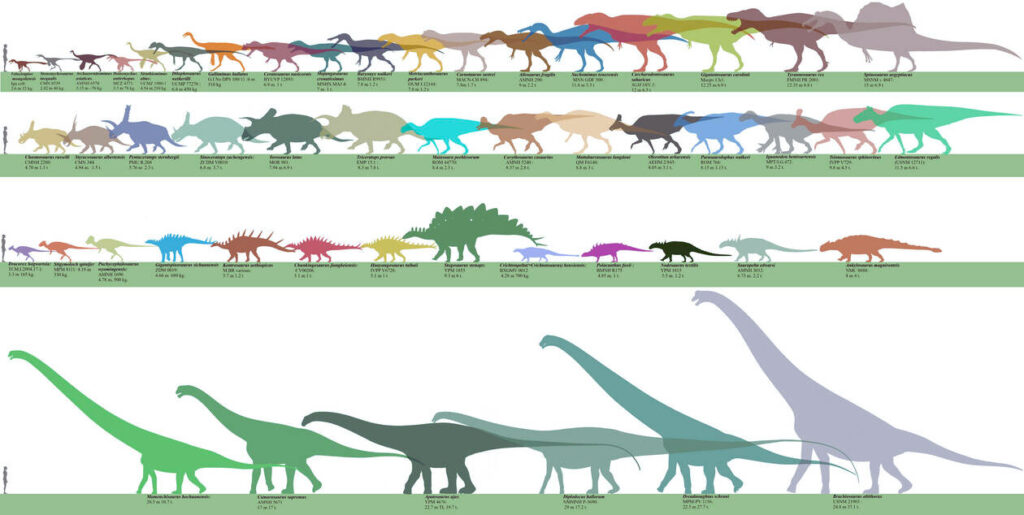
How Size Became the Key to Success in Dinosaur Evolution
In the grand theater of Earth’s history, the colossal size of dinosaurs wasn’t merely a quirk of evolution—it was a strategic advantage that propelled them to the zenith of prehistoric dominance. Let’s unravel the evolutionary advantages that size conferred upon these magnificent creatures.
1. Thermal Regulation
One of the evolutionary advantages of being large was enhanced thermal regulation. Larger dinosaurs could better regulate their body temperatures, allowing them to thrive in a variety of climates. This adaptability provided a competitive edge, enabling them to inhabit diverse ecosystems.
2. Predator Intimidation
The size was an imposing deterrent against predators. Large herbivorous dinosaurs, with their towering statures, presented formidable challenges to would-be carnivorous attackers. This deterrent effect acted as a natural defense mechanism, reducing the risk of predation.
3. Extended Range for Foraging
The colossal size of herbivorous dinosaurs extended their reach for vegetation. Long necks and massive bodies allowed them to forage in areas that smaller herbivores couldn’t access. This adaptability in diet and feeding locations contributed to their evolutionary success.
4. Energy Storage and Efficiency
Larger body sizes allowed for greater energy storage. Dinosaurs could endure periods of scarcity by relying on stored energy reserves. This adaptability to fluctuating environmental conditions conferred a survival advantage over smaller, less energy-efficient species.
5. Mating Success and Competition
Size often plays a crucial role in mate selection and competition for mates. Larger dinosaurs, especially males, had advantages in attracting mates and asserting dominance over rivals. This sexual selection contributed to the perpetuation of certain size traits within species.
6. Territory Establishment
Large size facilitated the establishment and defense of territories. From mating grounds to prime foraging areas, the ability to assert dominance over a defined territory provided access to critical resources and ensured the survival of both herbivores and carnivores.
7. Longevity and Life Span
In general, larger animals tend to have longer life spans. The evolutionary advantage of an extended life allowed dinosaurs to navigate the challenges of their dynamic environments over more extended periods, increasing their opportunities for reproduction and leaving a lasting impact on the planet.
The evolutionary advantages associated with size showcase the intricate web of adaptations that allowed dinosaurs to not only survive but thrive for millions of years. Size was not just a physical attribute; it was a strategic tool that shaped the destiny of these awe-inspiring creatures, leaving an enduring legacy in Earth’s geological archives.
Why Were Dinosaurs So Big: A Closer Look
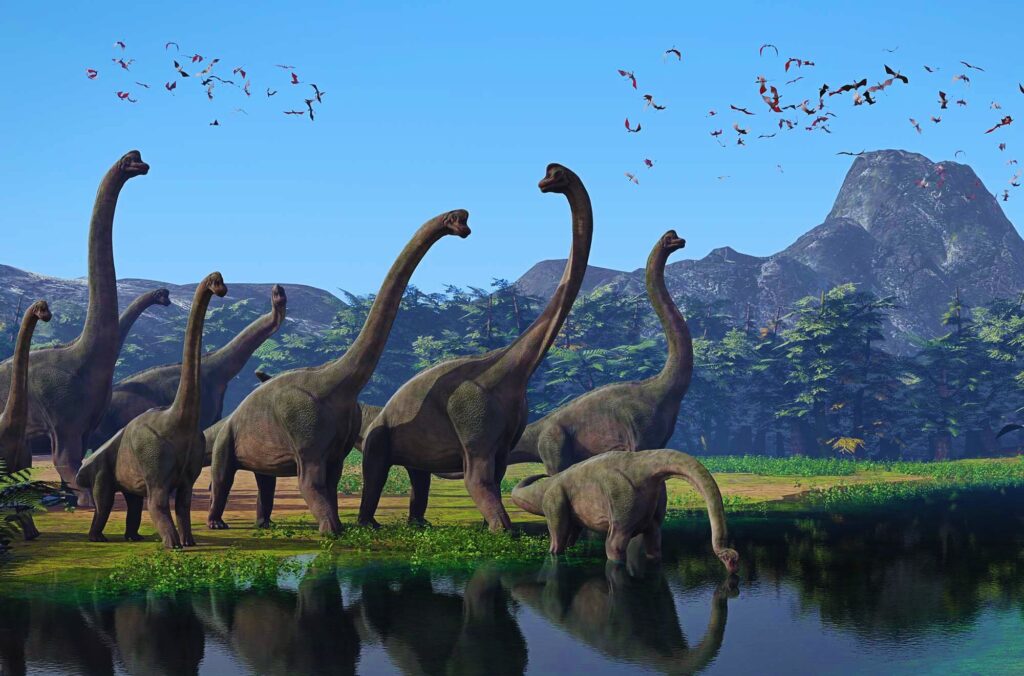
Herbivores vs. Carnivores
The Divergent Evolutionary Paths of Plant Eaters and Predators
In the sprawling landscape of the Mesozoic Era, dinosaurs evolved into two main ecological niches: herbivores, the plant-eaters, and carnivores, the fearsome predators. Let’s explore the distinctive features and evolutionary strategies that set these two groups apart.
Herbivores: Grazing Giants
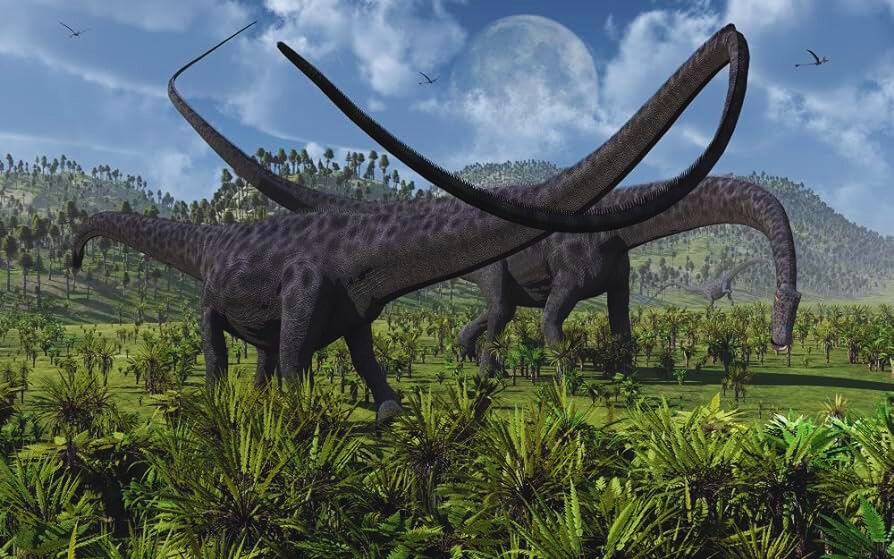
1. Specialized Dentition
Herbivorous dinosaurs boasted specialized dentition suited for processing plant material. From broad, flat teeth for grinding to sharp beaks for cropping vegetation, these adaptations optimized their ability to extract nutrients from a herbivorous diet.
2. Massive Gastrointestinal Systems
To extract maximum nutrition from fibrous plant material, herbivores developed large, complex gastrointestinal systems. Multiple stomach chambers and prolonged digestion times were common adaptations, allowing for the efficient breakdown of tough plant fibers.
3. Cooperative Behavior
Some herbivorous dinosaurs exhibited cooperative behavior. Living in herds provided protection against predators, facilitated mating opportunities, and enhanced their ability to find and access food sources in different regions.
4. Long Necks and Tails
Many herbivorous dinosaurs evolved with long necks, enabling them to reach high vegetation that was out of reach for smaller competitors. Additionally, long tails acted as counterbalances, aiding in stability and maneuverability.
Carnivores: The Apex Predators
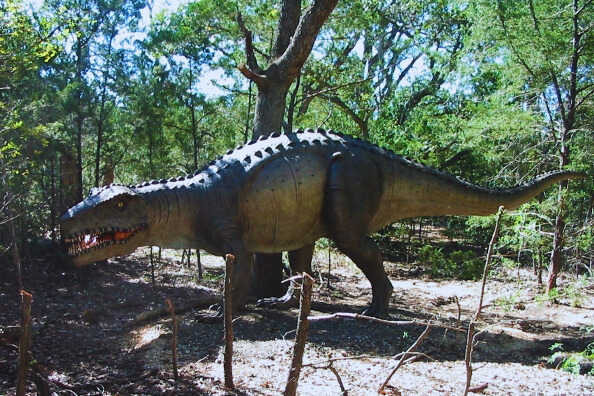
1. Specialized Teeth and Jaws
Carnivorous dinosaurs developed sharp, serrated teeth and powerful jaws designed for tearing flesh. These adaptations were essential for capturing, subduing, and consuming prey efficiently.
2. Hunting Strategies
Carnivores were strategic hunters, employing various tactics such as pack hunting or solo stalking. Enhanced senses, particularly keen eyesight and an acute sense of smell played a crucial role in detecting potential prey over vast distances.
3. Speed and Agility
Carnivores often evolved with streamlined bodies and powerful limbs, providing them with exceptional speed and agility. These physical traits were advantageous for pursuing and catching swift prey.
4. Territorial Behavior
Many carnivorous dinosaurs exhibited territorial behavior. Establishing and defending territories ensured a consistent supply of prey and minimized competition with other predators. Territoriality also played a role in attracting mates.
Coexistence and Interactions
1. Predator-Prey Dynamics
The perpetual dance between herbivores and carnivores shaped ecosystems. The predator-prey dynamics influenced the evolution of both groups, leading to adaptations for evasion, defense, and predation.
2. Ecological Balancing Act
The presence of herbivores maintained the balance of plant populations, preventing overgrazing and ecosystem destabilization. Carnivores, in turn, controlled herbivore populations, preventing unchecked herbivore proliferation.
In the rich tapestry of dinosaur evolution, herbivores and carnivores represented distinct strategies for survival. The herbivores, with their adaptations for efficient plant consumption, and the carnivores, with their prowess as apex predators, played integral roles in the intricate web of life during the Mesozoic Era.
The Predator-Prey Dynamic
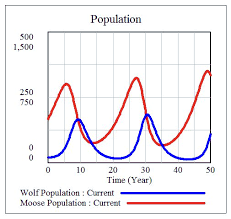
Nature’s Endless Dance: Unraveling the Intricate Relationships Between Dinosaurs
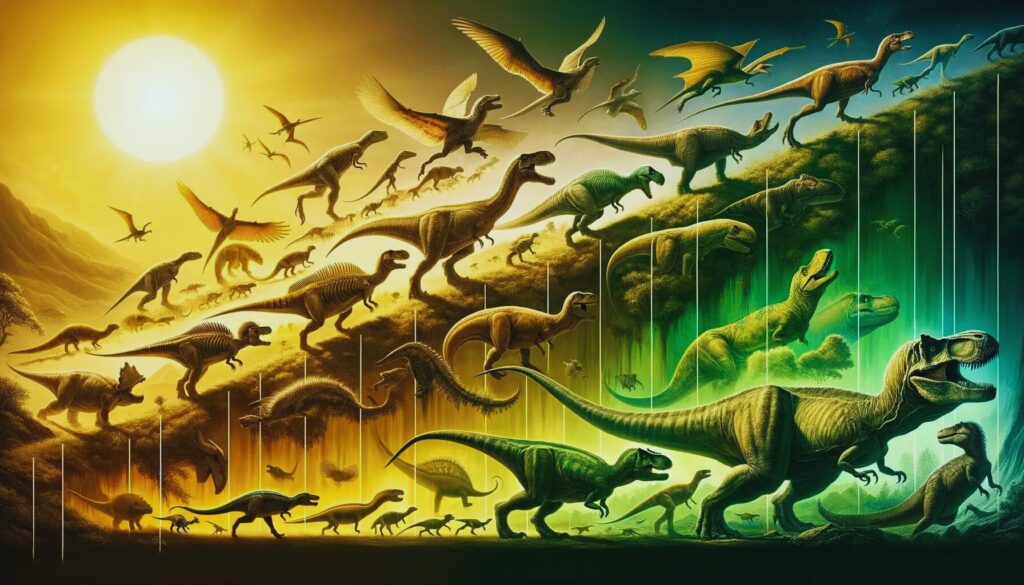
In the ancient theater of survival, the predator-prey dynamic among dinosaurs was a riveting spectacle, shaping the very fabric of prehistoric ecosystems. Let’s delve into the intricacies of this perpetual dance, where the hunters and the hunted coexist in a delicate balance.
1. The Stakes of the Hunt
Hunting Strategies
Carnivorous dinosaurs, armed with specialized teeth and keen senses, developed a variety of hunting strategies. From solitary ambush predators to coordinated pack hunters, each species had its unique approach, adapting to the challenges of capturing elusive prey.
Prey Adaptations
On the other side of the equation, herbivorous dinosaurs evolved numerous adaptations to avoid falling victim to carnivorous predators. Vigilant behavior, herding tendencies, and swift locomotion were among the strategies employed to evade the ever-watchful eyes of their predators.
2. The Circle of Life
Ecological Impact
The predator-prey dynamic had profound ecological consequences. The continuous cycle of predation and consumption regulated herbivore populations, preventing overgrazing and maintaining a healthy balance within ecosystems. This delicate equilibrium ensured the flourishing of diverse plant and animal life.
Coexistence and Evolution
As predators exerted selective pressures on herbivore populations, the evolution of defensive adaptations became crucial. This coevolutionary arms race led to the development of a myriad of features, from defensive armor to heightened agility, as both predators and prey sought advantages in the perpetual struggle for survival.
3. Territorial Chess
Territorial Behavior
Establishing and defending territories was a common strategy among carnivorous dinosaurs. Territories provided a reliable source of prey, and the act of defending these territories served as both a means of sustenance and a display of prowess to attract potential mates.
Survival Strategies of Herbivores
Herbivores, in response, developed intricate social structures and cooperative behaviors. Living in herds not only provided a communal defense against predators but also increased their chances of detecting potential threats early, enhancing the overall survival rate of the group.
4. Impact of Size on Dynamics
Size Disparities
The size disparity between predators and prey played a significant role in shaping the dynamics of their interactions. Larger predators could take down larger prey, but they also faced challenges in capturing more agile targets. Herbivores, in contrast, relied on safety in numbers and agility to escape the clutches of their formidable adversaries.
The Role of Omnivores
Some dinosaurs occupied the intermediary role of omnivores, blurring the lines between predator and prey. Their adaptive diets allowed them to capitalize on a broader range of food sources, demonstrating the flexibility required to thrive in ever-changing environments.
In the grand tapestry of the Mesozoic Era, the predator-prey dynamic was the heartbeat of ecosystems, driving the evolution of both hunters and hunted. This endless dance of survival and adaptation shaped the destiny of dinosaurs, leaving an enduring legacy that echoes through the annals of Earth’s history.
Sexual Selection Theories
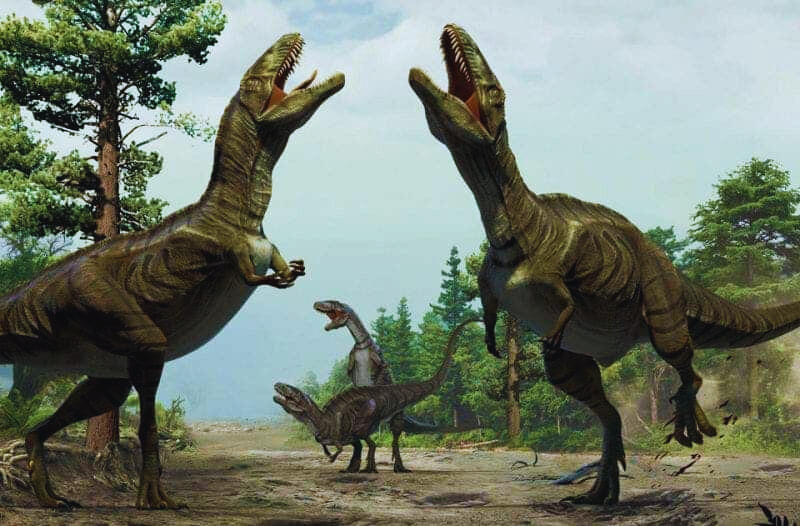
Dinosaur Romance: Exploring the Intricate Dance of Mate Selection
In the enchanting world of dinosaurs, the quest for mates was not a simple affair. Sexual selection, a powerful force in evolution, led to the development of unique traits and behaviors that influenced mate attraction and competition. Let’s unravel the theories that underpin the fascinating dynamics of dinosaur courtship.
1. Ornamental Displays and Attractiveness
Coloration and Patterns
Some dinosaurs exhibited vibrant coloration and intricate patterns, particularly during mating seasons. These ornamental displays weren’t merely aesthetic; they signaled genetic fitness to potential mates. Bright hues and elaborate markings became beacons of attractiveness.
Physical Features and Size
Size, often associated with dominance, played a role in mate selection. Large, imposing structures in males could serve as indicators of genetic superiority. Conversely, in some species, females evolved more subdued colors, emphasizing the role of males in attracting mates.
2. Courtship Rituals and Behaviors
Elaborate Courtship Displays
Courtship wasn’t a silent affair among dinosaurs. Elaborate displays, from vocalizations to intricate dances, were common strategies. These behaviors allowed individuals to showcase their prowess, fitness, and genetic quality, influencing the preferences of potential mates.
Competitive Displays Among Males
In some species, males engaged in competitive displays to assert dominance and win the favor of females. Horns, crests, or other physical attributes became tools in these competitions. The successful male not only secured a mate but also passed on his genes for formidable displays.
3. Mate Choice and Female Agency
Female Preferences
Contrary to the idea that males were the sole architects of courtship, females often played an active role in mate choice. Evolution favored females with the ability to discern desirable traits in potential mates, ensuring the transmission of favorable genetic characteristics to the next generation.
Selection for Parental Qualities
Beyond physical traits, females might have selected mates based on their parenting qualities. Those males displaying caregiving behaviors or contributing to the protection of offspring stood a better chance of being chosen as mates, contributing to the survival of their genetic lineage.
4. The Role of Olfactory Communication
Pheromones and Scent Marking
Olfactory communication plays a crucial role in mate selection. Pheromones and scent marking were employed by dinosaurs to convey information about their reproductive status, health, and genetic compatibility. Individuals could gauge these chemical cues to make informed mate choices.
Chemical Signaling in Territory Establishment
In addition to mate selection, chemical signaling was integral to territorial establishment. Dinosaurs marked their territories with distinct scents, signaling both their presence and readiness for potential mates. These olfactory cues influenced the complex social structures within dinosaur communities.
In the realm of dinosaur romance, sexual selection theories wove a tapestry of vibrant displays, intricate behaviors, and nuanced choices. These evolutionary strategies ensured not just the continuation of species but also the perpetuation of desirable traits, leaving an indelible mark on the diverse and enchanting world of prehistoric courtship.
Conclusion
In concluding our journey into the colossal world of dinosaurs, we’ve scratched the surface of understanding why these magnificent creatures were so big. From environmental influences to evolutionary advantages, the reasons are as diverse as the dinosaurs themselves. The legacy of their colossal size continues to captivate scientists and enthusiasts alike, leaving us in awe of the giants that once roamed our planet.
Read also: Why Were Pistachios Dyed Red: Unveiling the Cultural Significance
FAQs about Dinosaurs’ Size
Q: Were all dinosaurs large?
Absolutely not. While some dinosaurs were colossal, many species were moderate or even small in size. The dinosaur kingdom exhibited a diverse range of sizes.
Q: Did the asteroid impact affect dinosaur size?
The famous asteroid impact that led to the extinction of dinosaurs did not directly influence their size. However, it played a crucial role in their overall extinction.
Q: How do scientists estimate the size of dinosaurs?
Scientists use a combination of fossil evidence, skeletal measurements, and advanced modeling techniques to estimate the size of dinosaurs accurately.
Q: Were all large dinosaurs carnivorous?
No, there were large herbivorous dinosaurs as well. The size of dinosaurs was not exclusively determined by their diet; various factors contributed to their dimensions.
Q: Did climate change impact dinosaur size evolution?
Climate change did influence dinosaur size evolution. Shifts in climate patterns affected vegetation, which, in turn, influenced the size of herbivorous dinosaurs.
Q: Were there miniature dinosaurs?
Yes, there were miniature dinosaurs. Some species were as small as chickens, showcasing the incredible diversity within the dinosaur kingdom.
